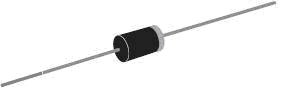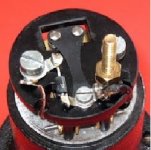Innerhalb der Komplettrestauration möchte ich bei meinem MKIII BJ8, Baujahr 1966, die kontaktbehaftete SU-Benzinpumpe gegen eine neue kontaktlose elektronische Pumpe tauschen.
Da ich bei meiner alten Pumpe den Typ nicht identifizieren kann und auch in der Serviceanleitung nur die alte Bezeichnung AUF 301 zu finden ist, weiß ich nicht, welches der richtige elektronische Ersatztyp bei BURLEN ist. Ich finde dort nicht genügend Hinweise auf den entsprechenden Typ (Ausgangsdruck,Volumen/h, Bauform). Außerdem habe ich vor die Polarität des Fahrzeugs auf Minus an Masse zu ändern.
Bevor ich mit Burlen telefonischen Kontakt aufnehme, kann mir jemand einen Insidertip geben, ob und welches Modell ich dort bestellen sollte?
Besten Dank im voraus
Da ich bei meiner alten Pumpe den Typ nicht identifizieren kann und auch in der Serviceanleitung nur die alte Bezeichnung AUF 301 zu finden ist, weiß ich nicht, welches der richtige elektronische Ersatztyp bei BURLEN ist. Ich finde dort nicht genügend Hinweise auf den entsprechenden Typ (Ausgangsdruck,Volumen/h, Bauform). Außerdem habe ich vor die Polarität des Fahrzeugs auf Minus an Masse zu ändern.
Bevor ich mit Burlen telefonischen Kontakt aufnehme, kann mir jemand einen Insidertip geben, ob und welches Modell ich dort bestellen sollte?
Besten Dank im voraus

 Hi Guest!
Hi Guest!

 smilie in place of the real @
smilie in place of the real @
 Pretty Please - add it to our Events forum(s) and add to the calendar! >>
Pretty Please - add it to our Events forum(s) and add to the calendar! >> 

